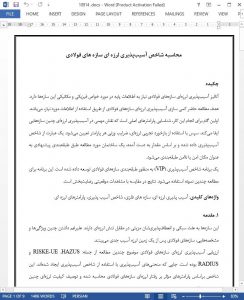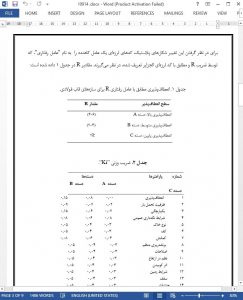Abstract
Seismic vulnerability analysis of steel structures requires some basic information on their mechanical and structural properties. The present study aims to quantify the seismic vulnerability of steel structures, through the use of the needed information. The first step to do so is the identification of the main parameters that play an important role in the seismic vulnerability of such structures. Then using seismic feedback experience, weighting coefficients of each parameter are determined. An expression of a vulnerability index is given and based on the obtained value a building under study is classified as safe or unsafe according a proposed classification. A vulnerability index program (VIP) is developed in order to classify steel structures. This program is used to study several examples. The results are satisfactory comparing with in situ observations.
1. Introduction
Steel structures offer an advantage against the seismic stress due their lightness and ductility. Despite these characteristics steel structures can suffer significant damage after an earthquake [1,2].
The assessment of the seismic vulnerability of steel structures has been the subject of several studies HAZUS, RISK-UE, and RADIUS. Where vulnerability curves have been established using vulnerability index [3,4,5].This index is calculated based of some parameters having an influence on the seismic behaviour of steel constructions and allowing description of seismic quality of such constructions [6].
5. Conclusions
A vulnerability index method for steel structure has been developed and presented in this study. Elaborated specially for steel structures, it gives reasonable results regarding the influence of the different parameters such as Ductility, Bearing capacity and Buckling, on the seismic behaviour of steel structure.
A classification has been established; the results from this classification are in accordance with the one done in situ. As a result, this classification can be used by engineers to reduce seismic risk and casualties in case of an earthquake.











